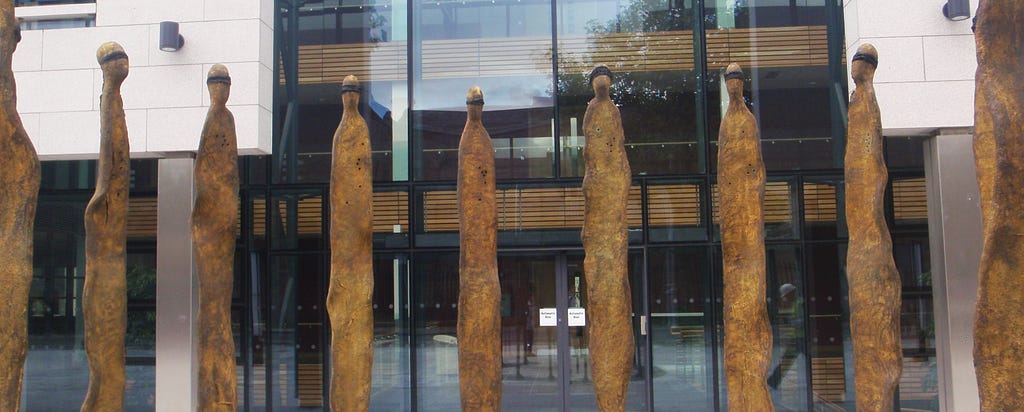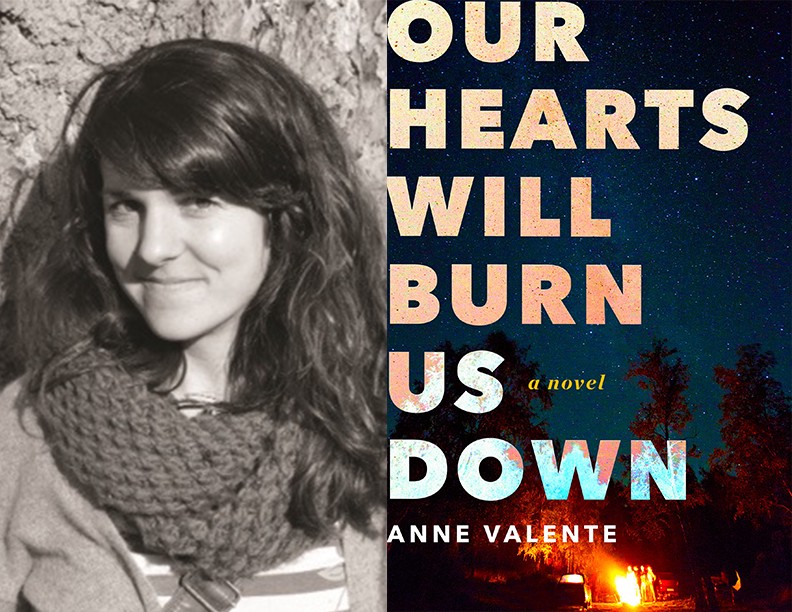essays
The Poet’s House: Seamus Heaney and the Literature of Violence
How Heaney talked to us about the Troubles, lives lost, and scores settled and rekindled

Electric Lit is just $4,000 away from our year-end fundraising goal of $35,000! We need to hit this target to get us through the rest of 2025, and balance the budget for 2026. Please give today! DONATE NOW.
What do we say anymore to
Conjure the salt of our earth?
So much comes and is gone
That should be crystal and kept…”
— Seamus Heaney
The pictures show thousands at the poet’s funeral — rock stars and presidents and actors — but I was drawn to the faces of Seamus Heaney’s children, the two sons, Michael and Christopher, and the daughter, Catherine Ann. I remembered two boys regaling American college students with their favorite New Wave music — sounds we were barely hearing in the States in 1980. And the girl, seven years old, asking me to read from her book of folk tales before she went to sleep. I look at the young woman in the pictures, and remember those eyebrows, engrossed in her story, not, as they were now, drawn in grief. In a house across from the strand in Sandymount, Dublin, where I ate all her family’s bread.
There were ten of us — nine students and a professor, in a van, driving across England and Ireland to read literature where it had been written.
There were ten of us — nine students and a professor, in a van, driving across England and Ireland to read literature where it had been written. Hardy in the south of England, Brontës in the north. Yeats in Mayo, Synge on Aran, Joyce in Dublin. We read from Heaney’s latest book, Field Work, in Glencolumbkille in the far northwest, near Northern Ireland, but not over the border. It was 1980, during the Troubles; tourists weren’t traveling there, not even literature students seeking something “authentic.”
I had not expected to be able to take part in such an extravagant trip, but a scholarship from my college made it possible. Plane fare and other costs wiped out most of my savings. For the last week of travel before we got to Dublin, I’d carried a loaf of cheap, supermarket bread and a jar of peanut butter, and for the most part, that’s what I’d been eating. The professor who led the trip had some connections, and the day before we met Heaney, we’d been treated to a lunch at the Guinness factory, as well as a private tour. It was not a tourist destination as it is now, partly because of the threat of violence. That was the only real meal I’d eaten for a while.
The other connection the professor had in Dublin was to Seamus Heaney. I don’t know how they became friends, but we were invited to an afternoon gathering at his home, while he read from his poems and talked with us. I I remember the house as red brick, a low stone wall around a small front yard. Heaney introduced us to his wife and three children. We sat in a large, though narrow, book-lined room off the front hall. The kitchen was in back — a dish of butter and a loaf of homemade bread were left out on the counter.
Heaney talked to us about the Troubles, the political and sectarian strife in Northern Ireland. Lives lost. Scores settled and rekindled.
I mostly remember the poems from his latest collection at the time, Field Work. Descriptions of armored tanks and patrols and bullets and the deaths of young people were silted between images of green fields and grey rocks and eating oysters beside the sea. Heaney talked to us about the Troubles, the political and sectarian strife in Northern Ireland. Lives lost. Scores settled and rekindled. At one point, something he said sounded to me like an advocacy of violence in an uncomfortable way, but I said nothing because it was his house, his country, his world that was being shaken every day. I was a visitor in all ways.

And I remember also, he read the poem “Punishment” from an earlier book, which intertwines an account of rough retribution enacted against a young Northern Irish woman accused of consorting with the enemy who was tarred and feathered by her community, and the description of the mummified body of an executed Iron Age woman dug up in a peat bog. He showed us pictures of the bog people, their skin darkened by the seep of ancient mud. “Here is the girl’s head like an exhumed gourd” starts another of his Bog Poems entitled “Strange Fruit.” At that age, I did not know the allusion to lynching. I did not know the Billie Holiday song.
At that age, I did not know the allusion to lynching. I did not know the Billie Holiday song.
To repay Heaney’s generosity, the professor took him and his wife out to dinner the next day, and a couple of us students were recruited to “babysit” the kids (mostly hang with them and relieve the older boys of being responsible for their sister). So the boys, Michael and Christopher, told us about the Specials and played us Police songs that weren’t getting airplay back home yet (I remember listening to “Walking on the Moon” multiple times). Catherine Ann went to bed earlier, and she and I sat and read from a book of folk-tales from around the world, stories I knew she had listened to many times. She was fun and chatty and at ease with these random Americans who’d taken over for the evening.
The other student and I, when the boys had headed upstairs, basically fell upon the loaf of bread. We kept hacking off slices and slathering butter on, until, abashed, we realized we’d finished the whole loaf. When Heaney and his wife returned, she raised her eyebrows at the missing bread, but said nothing.
Afterward, our professor said that Heaney had told him he was disappointed we hadn’t challenged him on the subject of violence. I think, even looking back, it would have been wrong to do so in his house, as if I had any right or standing to question his world. But then again, I’m certain on how I feel on violence and its use as a tactic, no matter what the circumstances. Six years before, I had been in the Tower of London the day before a bomb exploded in it, killing one person and injuring many others. Exactly forty-one years from the day I started writing this. So, what sows the gap between certainty and willingness to speak out?
Afterward, our professor said that Heaney had told him he was disappointed we hadn’t challenged him on the subject of violence.
I knew the oppression in the North was wrong, but so were the bombings. Turning it again: two months before that Tower of London bombing, several car bombs exploded simultaneously around Dublin and a town to the north. Thirty-four people died, the most in one day of the Troubles. The Ulster Volunteer Force took responsibility for those murders seventeen years later. When I call it “oppression,” I am sugar-coating the horrors. Heaney and his family lived this.
I also knew, and know, the poetry. “Punishment” both fathoms and mourns violence. In “The Strand at Lough Beg,” a memorial poem in Field Work, Heaney washes the body of a dead cousin with dew and moss. He writes, “With rushes that shoot green again, I plait/ Green scapulars to wear over your shroud.” It’s a complicating of green life, and the green of Ireland and its flag; “shoots” are new growth, but to “shoot green” carries the inevitable connotation.
I wavered to speak then, just short of twenty-two years old, and I wonder what I could say now, thirty-five years later? It’s a question I’ve come back to many times over the years. I am older than he was when these American kids sat in his house. Mostly, I don’t feel surer of myself as I age, but rather less so.
Listening to the voices of those in the crosshairs is not condoning violence; it is what is owed to the truth.
The last few years have seen a litany of unwarranted killings of black men and women by those in authority. We recite the names and mourn: Michael Brown, Eric Garner, Sandra Bland, Freddie Gray. And now Alton Sterling and Philando Castile. People of color who died at the hands of, in the custody of, authorities who are supposed to represent me, a continuation of the violence portrayed in “Strange Fruit” — the Irish poem and the American song. Here is where I have no leeway for hesitation. Listening to the voices of those in the crosshairs is not condoning violence; it is what is owed to the truth.
My own house is in disorder.
When we were in Glencolumbkille, in the far northwest of Donegal, in a cottage overlooking a steep rocky hill down to deep, narrow bay, the folksinger David Hammond visited us and played several of his songs, and talked about life in Northern Ireland. His latest album was called “The Singer’s House,” which is also the name of the poem this essay starts with. Heaney wrote that poem for Hammond, who’d canceled a recording after a bombing. He writes at the end of the poem,
When I came here first you were always singing,
A hint of the clip of the pick
In your winnowing climb and attack.
Raise it again, man. We still believe what we hear.
Heaney’s death was a terrible, unexpected loss. For his family most of all, of course, but for all of us who listen. Who believe what we hear, when we hear with care.
At the poet’s house, I ate bread. I read folk tales. I listened to music. I looked at pictures. I listened to poetry. I listened to tragedy. I listened.









